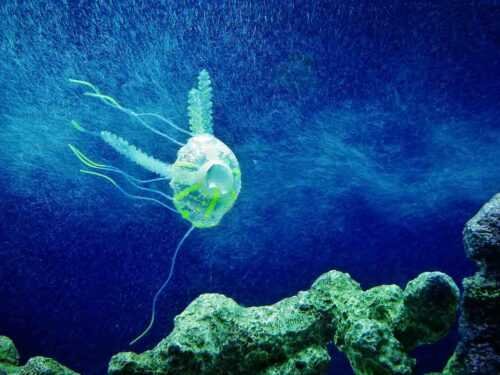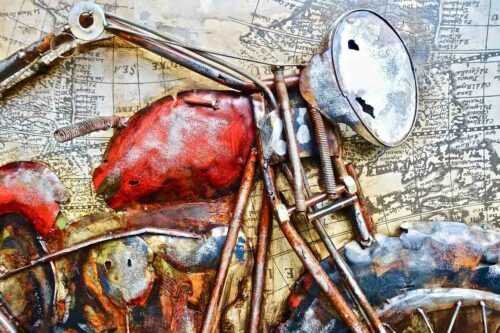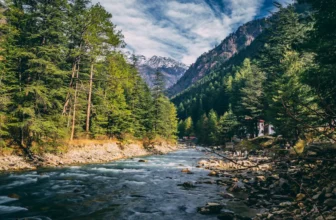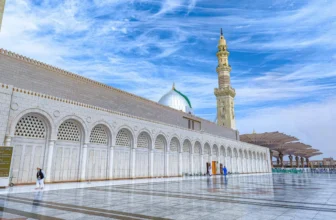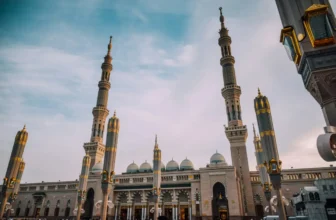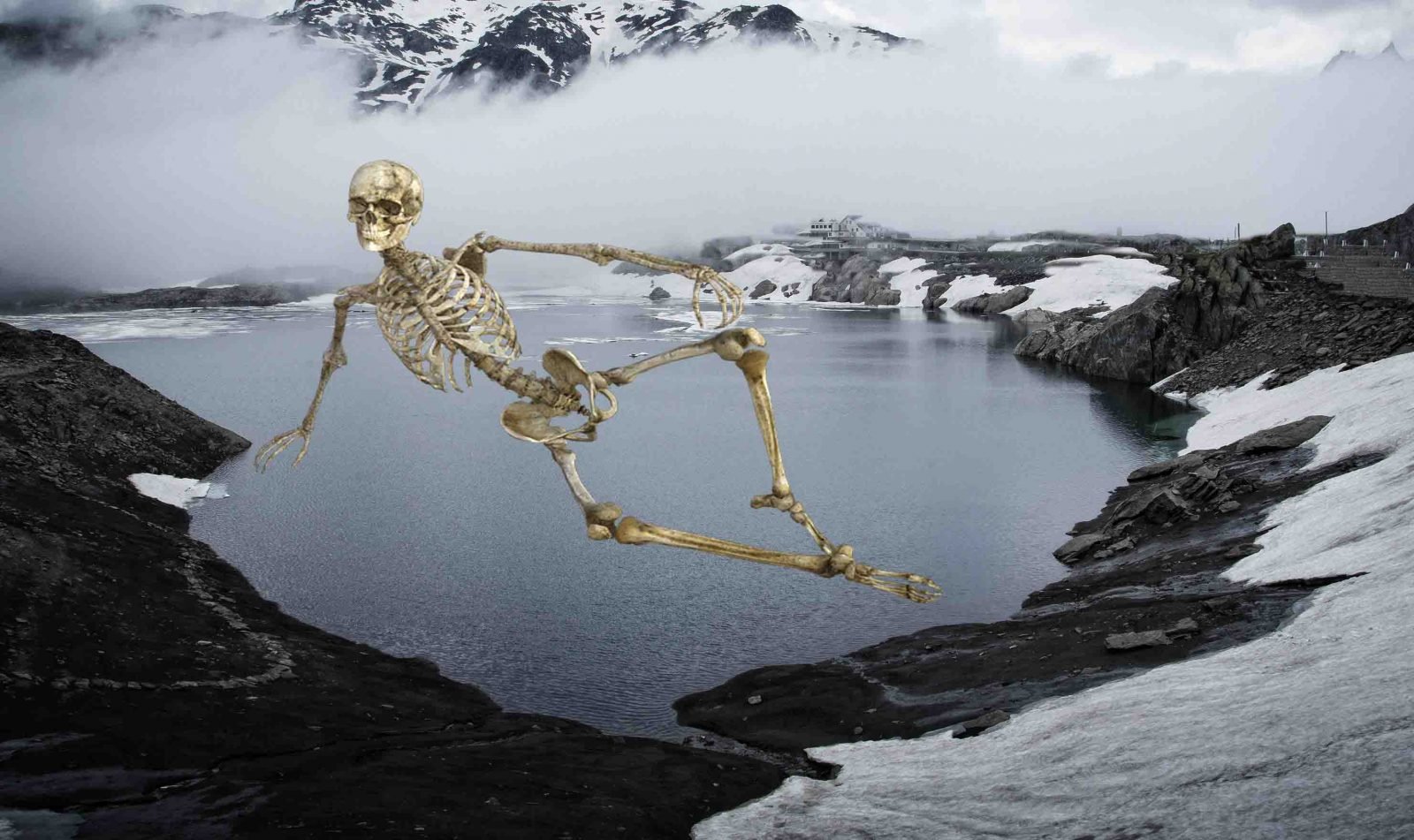
Roopkund is a glacial lake with an altitude of 5209m in Uttrakhand, India. It rests in the lap of Trishul Massif. Roopkund Lake is locally known as skeleton lake or Mystery Lake.
The mystery lake is called the skeleton lake by the locals because human skeletons are found at the bottom of the lake. This skeleton lake has a small depth of 2 meters max.
The site is immensely popular among those who seek adventure on their trip. Roopkund Lake is also famous for its trek. You will find many trekking routes on the way to Roopkund.
The place gives you two advantages at once. One is its scenic view, and the second is the tempting surrounding of the skeletons.
Roopkund Trek
The most prominent reason why the Roopkund trek is a must for every trekker is the beauty of Roopkund.
Almost every trekker you’d meet would say the same predictable things. But only a few trekkers could describe to you what this trek is famous for.
- Firstly it is safe for beginners.
- If it’s your first time trekking or you are just a beginner, you can still hike here. The altitude of the Roopkund trek is very high, almost 15,700 feet which is double that of Mount Blanc.
However, there are many trekking sites in our country that are ideal for beginners, even if the altitude is high as the Roopkund trek.

There are few chances of getting lost as the trail is broad and well-planned. We don’t even need to have a guide there with us while trekking.
You won’t need any guide if you strictly follow our Roopkund blog. You will need the guides only when crossing the snow patches on your last climb.

- Trishul is one of the most beautiful mountains you will ever see once you go for the Roopkund trek. Mount Trishul is the first mountaintop to be climbed and can be seen closely on the trek.
- It is 7000m high. Everest is tall and mighty, but Trishul would steal your soul with its pure beauty.
Roopkund is filled with many unique things. One of them is the oak trees over Wan. Most people don’t know that these oak forests are the densest in India. They are mostly untouched by humanity. Each of these oak forests is over 500 years old.
There is a twin grassland of Ali Bugyal and Bedni Bugyal, the largest high-altitude meadows in India. You will be spending 2 and a half days here, a fact that is missed by many. Each moment spent here will turn out to be a golden moment in your life.
Unlike Roopkund, not all treks would give you such a great feeling. The thrill is HIGH! Those who succeeded in climbing Junargali– 16,000 feet high, break down in tears of joy.

Roopkund Lake Difficulty
The difficulty level depends upon your physical health. It’d be easy for you to trek if you have prior experience in trekking. Junargali and Roopkund are considered tricky treks sometimes.
An additional fear of Acute Mountain Sickness (AMS) is also there. These two reasons make it difficult to trek sometimes. However, this would be easy for you if you have engaged in physical activities before.
Roopkund Skeleton Lake
The Skeleton Lake reveals the remains of human bones upon melting the ice every year. Numerous research took place to figure out the people’s identities, where they were from, and what happened to them, but they couldn’t conclude.
And the Skeleton Lake or Roopkund Lake story mystery, to date, is a mystery. The first time the skeletons came to light was in the 19th century. But the bones were re-discovered by H K Madhwal in 1942. He discovered the skeletons (a few of them) when the lake was frozen.
As the ice melted in summer, more skeletons could be seen at the lake’s edge. When the discovery happened, nobody knew whose remains it could be or how did they die?

Since the discovery occurred during the time of World War II, many speculated that the remains were of soldiers who fought in the war.
A team of investigators went there to determine the remains. Upon investigating, they quickly concluded that these bones were too old to be from the current war.
Another investigation on the skeleton lake showed that it has more than just skeletons. They found jewelry, leather slippers, wooden artifacts, and iron spearheads.

The Oxford University’s Radiocarbon Accelerator Unit organized radiocarbon dating on the remains. And the team concluded that the remains are from around 850 AD. Without any further evidence on history, it said that they were traveling.
But, the cause of their death is still unknown. One theory even suggested that their bodies were deposited in the lake due to glacier movement, and they did not die at the lake spot.
According to folklore, the king of Kanauj, Raja Jasdhaval, was traveling with his pregnant wife, Rani Balampa. A dance troupe and servants on a pilgrimage to Nanda Devi temple accompany them.
The Nanda Devi shrine was held only once in 12 years. On their way, the entire group was caught under the grip of a sudden, violent hailstorm. The hailstones were so huge that they killed the whole group as they couldn’t find any place to hide whatsoever.
For the longest time, the story remained a tale. But in 2013, the story found some validity in the claims made by the folklore.
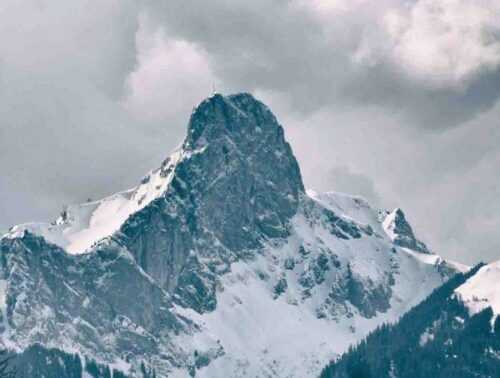
The researchers found out the cause of death and concluded that they did die because of a hailstorm because signs of heavy blows on the neck, shoulder, and head were revealed upon careful study.
As no other sign of wound mark was found on other body parts, the legend viewed it as the most reasonable explanation.
Today, the conservation of skeleton lakes is of big concern. Many trekkers visit the lake to see the remains, and some often take part or the whole of the skeletons as a reminiscence of their visit.
Preserving such remains is necessary, as further research might explain more about the remains and the cause of their death.
Roopkund lake facts
Roopkund Lake is a high-altitude glacial lake situated in the Indian state of Uttarakhand. It is also known as Skeleton Lake due to the many human skeletons found in and around it.
The lake is encircled by mountains covered in snow and beautiful meadows, making it a popular trekking destination for adventure enthusiasts.
It remains frozen for the majority of the year, and the best time to visit is between May and October when the weather is pleasant. The trek to Roopkund is quite challenging and takes about 6-7 days to complete. Despite the mystery surrounding the human skeletons found in the lake, Roopkund remains a popular tourist destination for trekkers and nature lovers alike.
FAQs
In 2004, a forensic analysis of the human skeletons found in Roopkund Lake led experts to believe that a group of Indian pilgrims and local porters were hit by giant hail during a single event in the 9th century. The skulls showed injuries that occurred around the time of death, suggesting that both men and women were among the victims.
Yes, Many people enjoy trekking on the Roopkund trail. The government has banned this activity Because it has a harmful effect on the variety of living things in the alpine meadows in the region.
Also Read:

